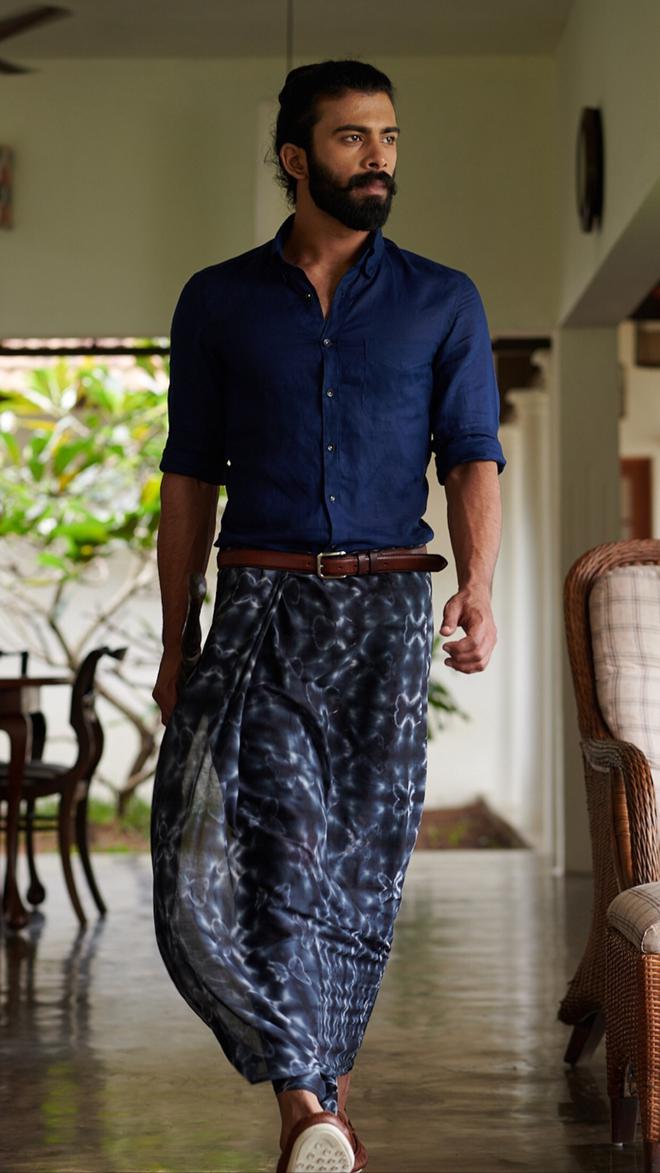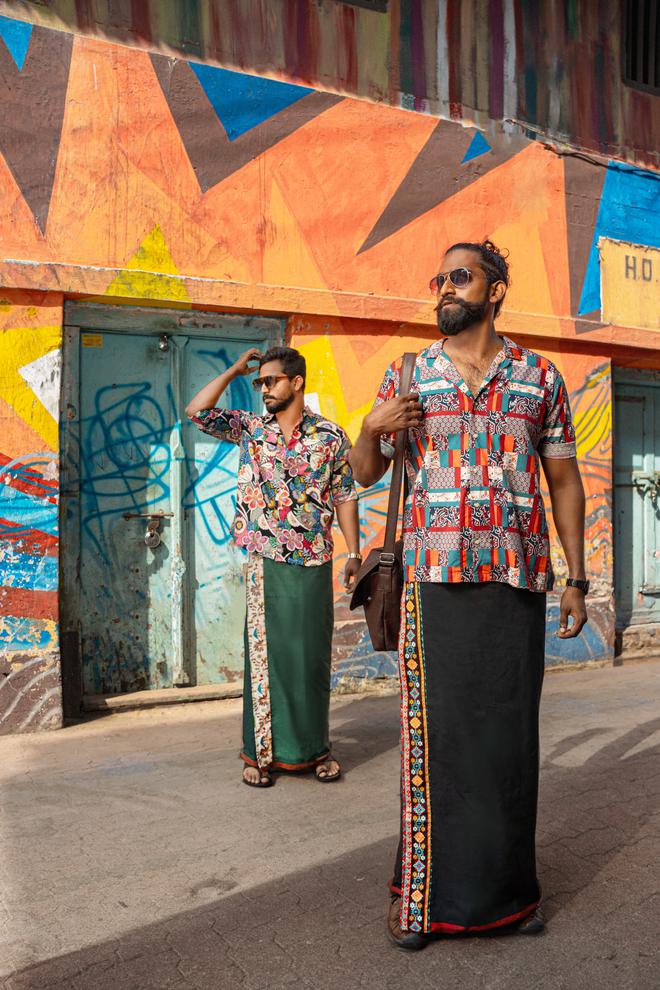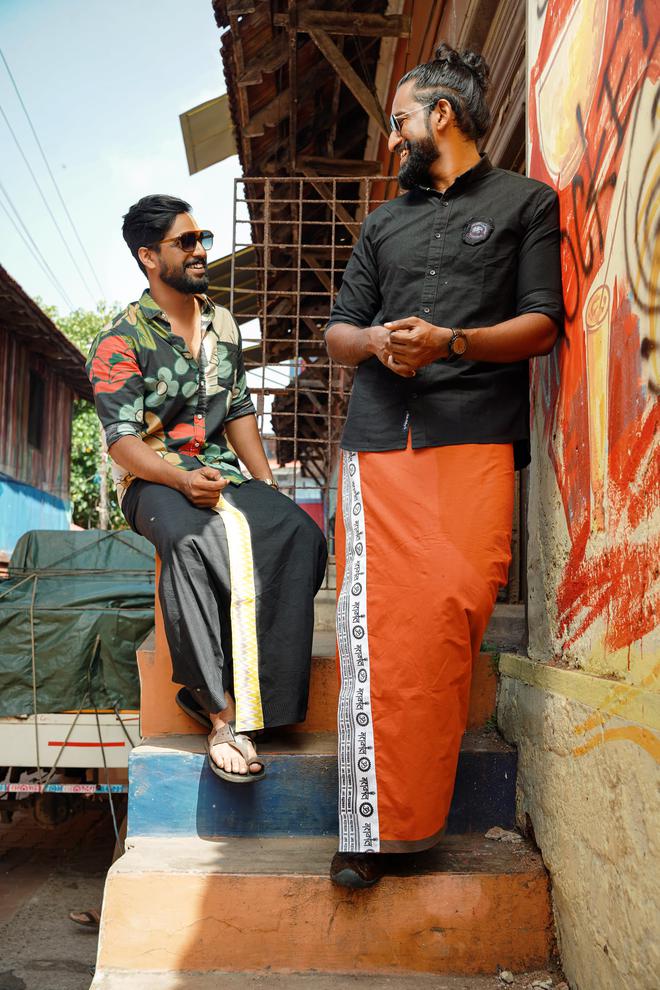
The lungi has been reinterpreted several times over — it has made it to runways, been upcycled into dresses and has even inspired Spanish label Zara to launch a lungi-style skirt in 2018. But the love for the garment is still flourishing, with millennials styling it in unique ways and embracing it as their cultural identity.
From attaching printed borders to showcasing art works and including functional elements such as pockets and waistbands, this street-style is all set to take off. While the traditional Madras checks is popular, plain coloured lungis are also in. “Why should saris have all the fun?” asks Vibin KM, who launched a line of designer lungies with colourful, printed borders three months ago. His label, Soochiem Noolum, based in Vadakara, Kozhikode, is a take on the Malayali’s nostalgic connection with the lungi. “Most of us millennials who have grown up in small town Kerala have worn the lungi. But somewhere down the line, this connection was lost and the label is an attempt to revive the bond,” says Vibin, who retails on Instagram.


An engineer who quit his job in an automation company in Bengaluru, Vibin runs the business with his wife Chippy Raju, a data scientist. “We are not designers, but we love the lungi. I wear it even while travelling,” he says. He sources the cotton fabric from Erode in Tamil Nadu and the fabric for the borders from small textile stores in Vadakara. The borders are then stitched at local tailoring shops in and around the town, mostly run by women. “As of now, the lungis come in six shades — black, bottle green, maroon, saffron, Navy blue and off-white. Vibin is bouyed by the response he has been receiving on his page and plans to introduce borders with motifs of Theyyam and Thrissur pooram.
It is all about styling, says Rasmi Poduval, of Thrissur-based label Seamstress, which boasts a collection of khadi hand-spun, hand-woven lungies in a bright palette. One of her customers, a skateboarder of Kerala origin based in the US wore a lungi while skateboarding, folding it upwards to the knees in the local style. “People are wearing it as co-ords, with printed shirts, accessorising it with jewellery and giving it a whole hipster vibe,” adds Rasmi. “It has resonated really well with the millennials especially, who are attaching a sense of pride to wearing locally-sourced garments that take them closest to their roots. The lungi is also extremely suited to our weather, and has a good fall and drape.”

Symbol of resistance
Chennai-based designer and fashion blogger Purushu Arie uses the lungi as a symbol of resistance against stereotyping in popular culture. The white mundu/veshti is respectable while the lungi is not. “Though it emerged as a style statement after Rajnikant wore black lungis in Kaala and Dhanush wore printed and checked lungis in Kaman, the lungi as a symbol of revolt against the systemic oppression of caste largely remains on the silver screen,” Purushu says. While working for an American fashion chain before launching his own label, Purushu had to go to Tirupur where he was staying at a premium hotel. “I came across a board which said, ‘No lungis allowed’ and that was the starting point,” he says.
His label, Wear Your Freedom, celebrates the garment with a focus on functionality. “Though most of us millennials grew up seeing the garment, few of us find it functional. So I have added pockets and waistbands to the lungis,” he adds.
A champion of gender fluid clothing, Purushu says the lungi is a fine example of gender neutral clothing as it can be worn by both men and women. A showcase he did at NIFT Chennai included lungi shorts, draped and tailored lungis as well.

Wearing the lungi is an expression of appreciation for our cultural heritage, says Chennai-based designer Vikram Balaji, whose label Viinkwear, which he launched in 2021, has a collection of lungis sporting art works. Vikram uses art by Indian artists on his apparel. He has done the art work for the range of lungis. While the Gatekeeper is a black end-to-end tailored lungi with bright red designs, the Luna Serpent is a white lungi with orange polka dots. “The response to these lungis have been great, it is almost sold out,” says Vikram, who believes the lungi is one of the most versatile garments.
For Varsha Devjani, who co-founded The Sufi Studio with Lajwanti Kulkarni, it is the fluidity of the lungi that inspires. The lungi fits Varsha’s design ethos as it is “unstructured”. “It inspires people to do more with their garments. It can be paired with tank tops, crop tops and kurtas, it lends itself to the imagination.” The Goa-based brand’s philosophy is based on not conforming to labels such as western or Indian. All the garments are free size and gender neutral. The lungi range comes with canvas straps and brass accessories to make it more wearable. “The only challenge of wearing a sari or a lungi is that there is too much to drape. But when it is made more functional with the required accessories, there is nothing quite fabulous like the lungi.”







